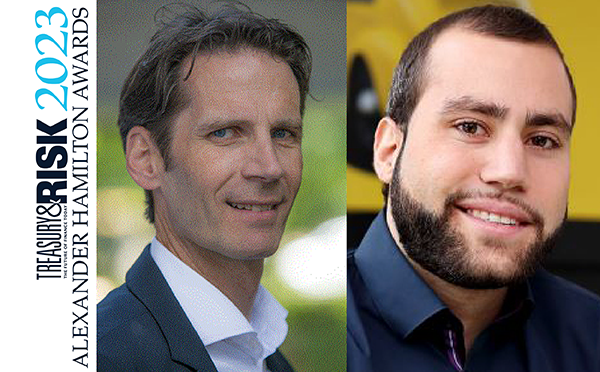The rash of natural disasters this year spotlighted property damage as one of the key elements of supply-chain risk that companies must not only identify but quantify to achieve an effective risk/reward balance.
"Companies tend to focus on quality, costs inventory, margin pressures, the obvious things. But property risk has been a blind spot," says Eric Jones, manager of the business risk consulting group at FM Global. "With all the property-related events that have occurred, companies are starting to recognize that blind spot."
The focus on property risk accompanies a broader emphasis on managing the risks in supply chains, which have been bombarded not only by a series of natural disasters but volatile commodity and financial markets as well as political upheavals.
Recommended For You
"There's been more interest in the supply chain over the last 18 to 24 months than the previous seven years combined," Jones says.
Supply chains, however, often involve hundreds or even thousands of direct suppliers—never mind those suppliers' suppliers. Jay Gotelaere, managing director of the actuarial and analytics practices at Aon Global Risk Consulting, says the first step is to identify what issues may arise and from that hypothetical construct start to map out the process to manage those risks.
"Then we can drop in, as actuaries, some of our quantitative techniques, to take those concepts and produce quantitative information that's helpful from a decision-making perspective," Gotelaere says.
To identify those risks, Aon's consultants talk to executives in clients' finance and accounting departments as well as supply-chain executives. Gotelaere says talking to executives close to the actual flow of products or inputs is key, but so is the broader perspective offered by treasury, operations and other relevant departments. "Some parts of the organization are concerned about cash flow or sales or logistics, but reality they're all important," he says.
Identifying "pinch points" in the supply chain is a key part of prioritizing risks, Gotelaere says. Companies must identify factors that could adversely impact those points, whether property, credit, political or other risks. Aon then helps them calculate the probability of that risk coming to fruition, so clients can weigh the likelihood of that risk occurring against the costs of mitigating it.
"We'll help identify if that's a good trade-off and, more importantly, how much the company can absorb with respect to a specific risk," Gotelaere says. "These risks can't necessarily be eliminated, but organizations can better understand their risks and find potential solutions that make financial sense."
FM Global employs no actuaries but instead combines engineering and accounting expertise to do a "deep dive into clients' business to understand their exposures" and quantify them, Jones says.
One of the biggest challenges for a company is determining which of its multitude of suppliers deserve the most concern. "Often companies will take a supplier-spend approach, so those they're spending the most money with will be the ones they focus on," Jones says, but notes that those suppliers may in fact be the easiest to replace and so the least risky, especially from a property perspective.
Supply-chain executives "almost innately know which suppliers are of most concern and why," he adds, explaining that FM Global executives mostly focus on a client's first tier of suppliers to "make sure the physical element is addressed," such as checking that businesses have effective sprinkler systems and their facilities are not in flood plains.
Companies increasingly require suppliers to have well-thought-out business continuity plans that are not simply checklists but are designed to protect the firms' revenue streams, Jones says.
He cites the example of a client that was winding down production at its U.S. manufacturing facility while ramping up production at a third-party outsourcer in Mexico. It had transferred most of its production there and was in the process of helping the supplier improve its facility when a fire damaged the plant.
Fortunately, the company had decided not to shut down its U.S. plant completely until it was comfortable with the outsourcer's business continuity plan, and it was able to shift production back to the domestic facility.
"A lot of these third-party manufacturers are just as critical as internal facilities," Jones says. "So if you want your own facilities to be well-protected, why wouldn't you apply the same philosophy to outsourcers?"
For a look at what some big companies are doing to control supply-chain risks, see So Long, Just-in-Time Inventory. And amid the increasing focus on supply-chain risks, a recruiter says top-level supply chain executives are hard to find.
© 2025 ALM Global, LLC, All Rights Reserved. Request academic re-use from www.copyright.com. All other uses, submit a request to [email protected]. For more information visit Asset & Logo Licensing.




